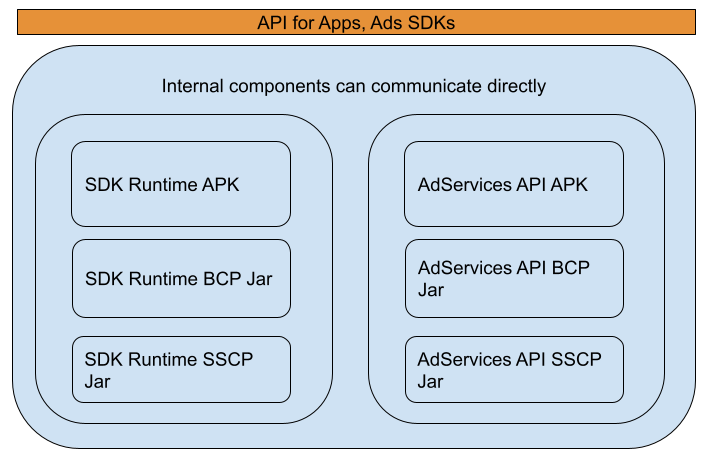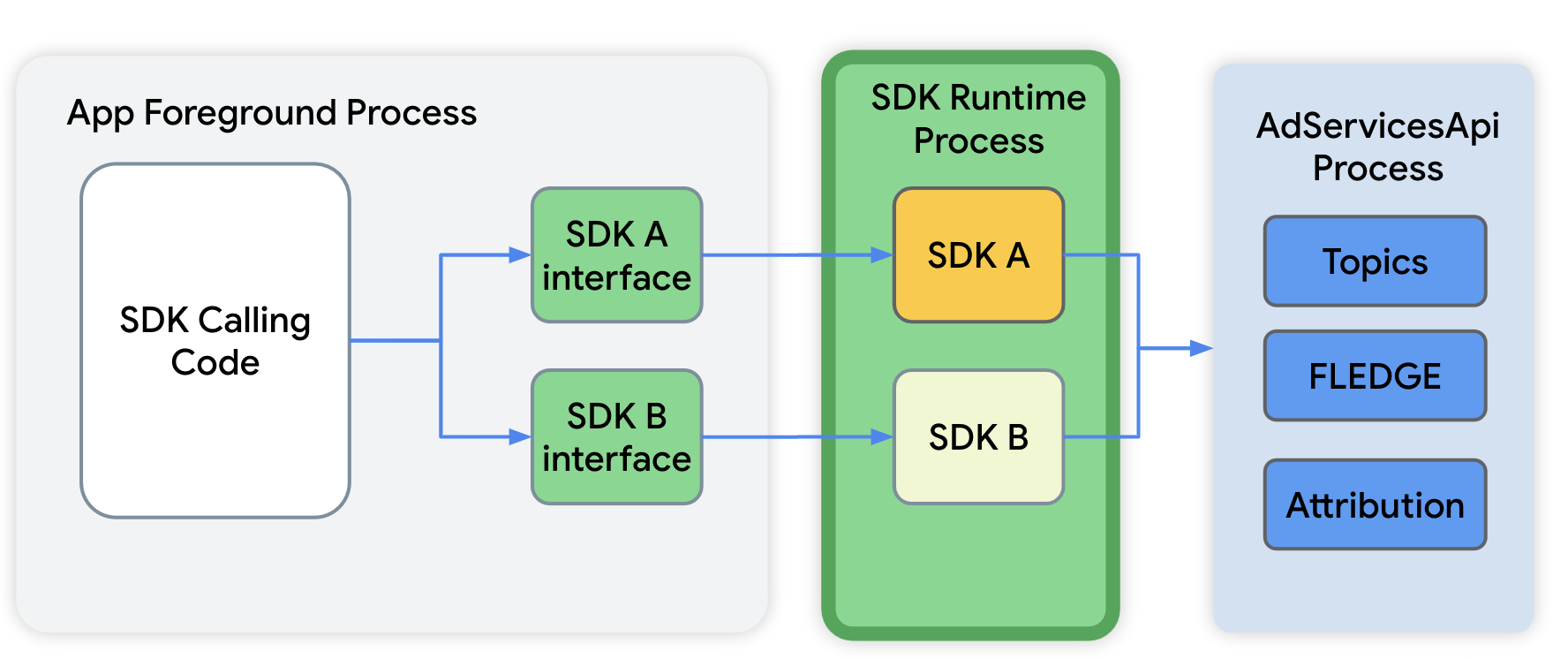The AdServices module, introduced in Android 13, supports the Privacy Sandbox initiative that aims to create technologies that both protect people's privacy online and give companies and developers tools to build thriving digital businesses.
More information is available on the Android Developer site.
Motivation
The goals of the Privacy Sandbox Initiative are:
- Build new technology to keep user information private
- Enable publishers and developers to keep online content free
- Collaborate with the industry to build to new internet privacy standards
Module boundary
AdServices architecture: This is all new code with no module boundary.
Code location: packages/modules/AdServices
Figure 1 shows the AdServices module setup.

Figure 1. AdServices module API design

Figure 2. AdServices module setup
Package format
Main functionality for the package will be available in APEX:
com.google.android.adservices.
Privacy Preserving APIs functionality will be available in APK
com.google.android.adservices.api.
SDK Runtime functionality will be available in APK
com.google.android.app.sdksandbox.
You can learn more about AdServices on the following pages:
- Privacy Sandbox Overview
- SDK Runtime Design
- Topics Design
- FLEDGE on Android Design
- Attribution Reporting Design
Dependencies
- New sepolicy domain for SDKSandbox
- Restrictions for SDKSandbox: limited storage, intents, broadcasts, etc.
- Well defined permissions; ad SDKs do not inherit permissions from apps
- OS changes to deal with sandbox UIDs
